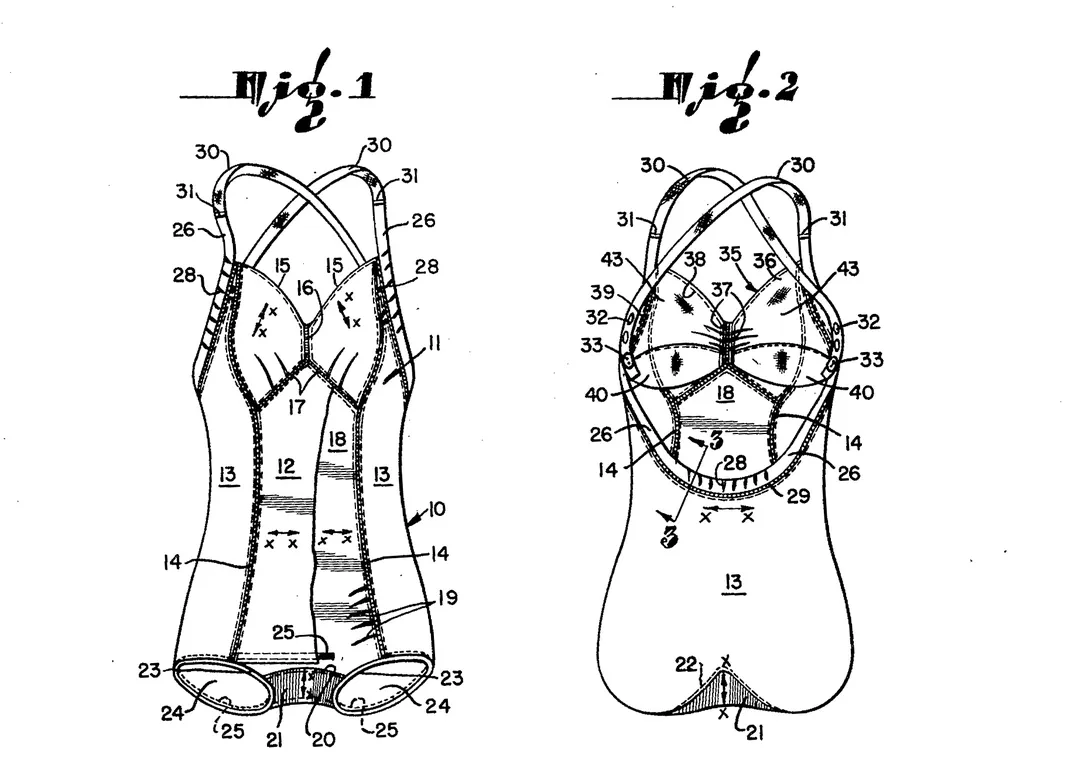How Swimsuits Became Fashion Items
Rose Marie Reid’s vision for beachwear helped shape the modern swimsuit
/https://tf-cmsv2-smithsonianmag-media.s3.amazonaws.com/filer/8c/2d/8c2d8a0e-ced2-4c36-9f6a-69f34fa2fe24/swimsuits.jpg)
In the dead of winter, 1950, a Los Angeles fashion designer named Rose Marie Reid–already known for designing the beachwear of stars such as Marilyn Monroe–patented a one-piece bathing suit made using elastic fabric that could just be pulled on. Reid, who already held a number of bathing suit-related patents, had just created the earliest version of the modern one-piece suit.
According to the patent, which was filed in 1946 but not granted until 1950, the invention would “shape and support portions of the body of the wearer in areas of the bust and abdomen in a flattering manner without discomfort or impedance to free movements of the body." Reid’s design as shown in the patent is still far more tailored than a modern one-piece, but it is a departure from the zippers, buttons and–at one point–shoelaces that Reid had used in previous designs.
Reid believed that women should “feel as dressed in a bathing suit as in an evening gown,” Barbara Campbell wrote in the designer’s 1978 New York Times obituary. She started designing bathing suits in the late 1930s, when she was an aspiring competitive swimmer, Campbell wrote. At the time, women’s bathing suits were made of materials like wool crepe, cotton and–in some extreme cases–rubber, like the shapewear of the period. They got heavy and soggy when wet, and came with risk of, ahem, wardrobe malfunctions–particularly when used by athletes. (Men’s swimming gear wasn’t much better.)
The Canadian got her big break when she designed a suit made of heavy cotton that laced up the sides with shoelaces. “One observer at the swimming meet, an executive with Hudson’s Bay, a department store in Canada, liked the suit and ordered a dozen,” Campbell wrote. By 1946, she was living in California and filing a patent for the first elastic bathing suit with no buttons or zippers on the market.

Reid is credited with bringing high-fashion status to swimwear, but it’s broadly true that more people were visiting and spending time at the beach as a commonplace leisure activity in the early 20th century, writes Paul Kerley for BBC News Magazine. “Designers and manufacturers realized there was a mass market for beachwear,” he writes–”but they also tried to protect the notion that spending time at the seaside was glamorous and aspirational.”
Fashion innovations like beach pajamas catered to this impulse, he writes. So Reid’s desire for a more streamlined suit was, partly, a case of being in the right place at the right time. By the 1950s, her business was dressing stars like Jane Russell and Sandra Dee.
Although Reid was known for advancing beach culture and designing modern, at times boundary-pushing swimsuits, she completely refused to design a bikini, according to the Brigham Young University special exhibit on Reid’s work. A devout Mormon, Reid felt that she shouldn’t be designing bikinis or other “immodest” bathing suits. This point of view ultimately resulted in her leaving Rose Marie Reid, Inc., her swimwear company, when they started producing bikinis in the early 1960s.